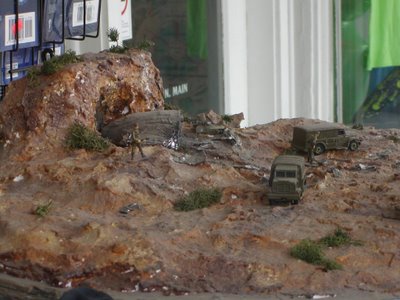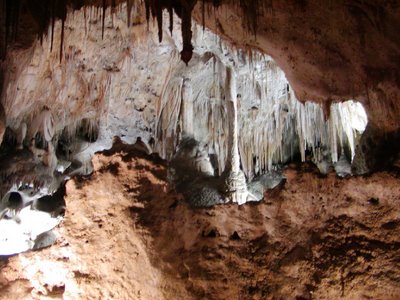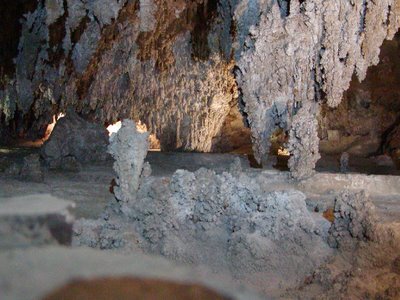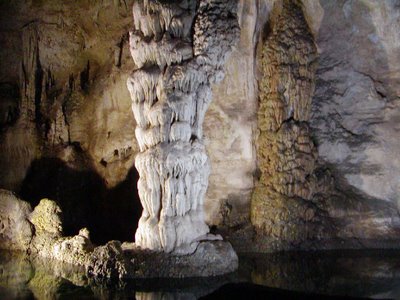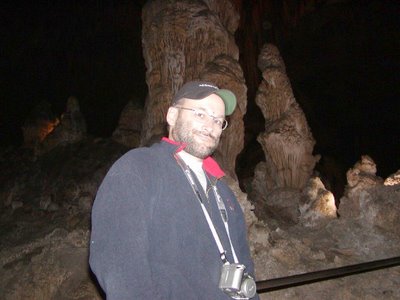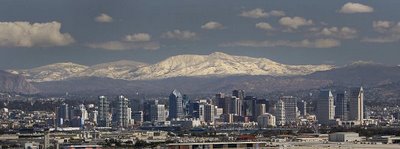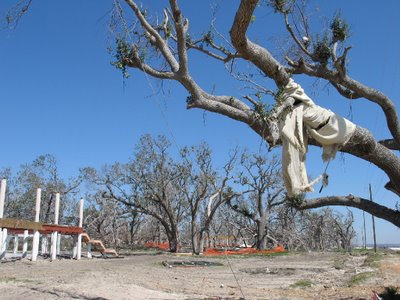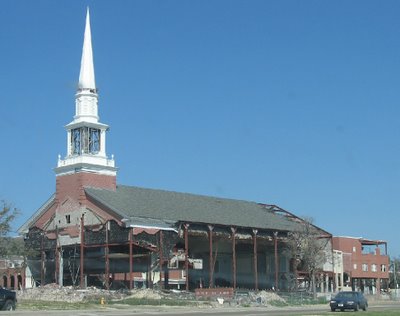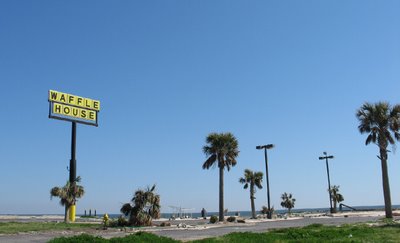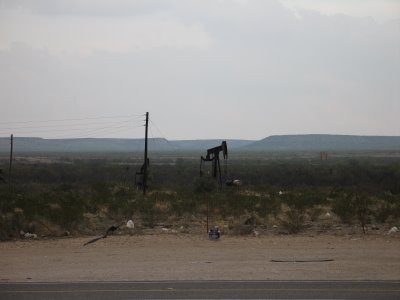
You can't get from Louisiana to Southern California without crossing West Texas, unless you make a major detour through even less interesting Midwestern terrain.
That's how we came to land in
Ft. Stockton, Tx. (pop. 7,400). The first exit to the town proudly promotes a driving tour of the city's historic district. We bit.
Less than 10 minutes later we had passed down Main Street, a sad thoroughfare pockmarked by vacant lots and empty storefronts. The Pecos County Courthouse, a well-preserved hotel and the late 19th Century mission-styled Catholic church clustered around the old town square were comely, but the rest of town was far too Dust Bowl depressing.

One of the few picturesque places that we encountered during our six-hour trek from Austin was Johnson City, birthplace of President Lyndon B. Johnson.
Nero expressed his gratitude for LBJ's service by whizzing on the front gate to the president's boyhood home.
Another slightly interesting stop was made in the town of
Ozona, home of the David Crockett Memorial.
As most of you will undoubtedly recall, the Tennessee native made a name for himself by serving in Congress and later dying at the Alamo, making him a mythological god among Texans.
So the big modern sculpture of Crockett in the central square of Ozona begged this question: What was he doing in Bumf&%#, Texas?
Well, apparently, he never set foot in the town. Rather, the locals adopted him as one of their own after the surrounding Crocket County was created and named in his honor.

From Ozona's central square, you can see
The Ozona Stockman office, home of the local newspaper.
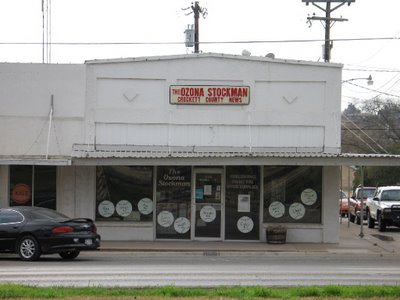
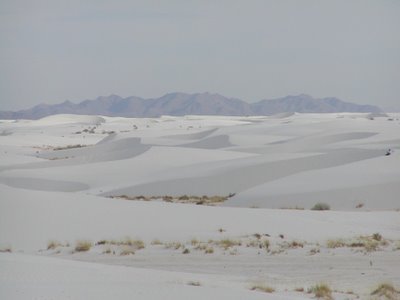 Wow! We almost skipped this stop. What a mistake that would have been. (Click on pic to make it bigger)
Wow! We almost skipped this stop. What a mistake that would have been. (Click on pic to make it bigger) These massive dunes of powdery gypsum (a mineral used in everything from cement to toothpaste) stretch for 30 miles along a wide valley set between the Sacramento and San Andres mountain ranges.
These massive dunes of powdery gypsum (a mineral used in everything from cement to toothpaste) stretch for 30 miles along a wide valley set between the Sacramento and San Andres mountain ranges. The highest dunes stand 60 feet. The sand is what's left of an ancient lake that began drying 10,000 years ago, exposing deposits of crystallized gypsum that for millions of years had washed into the pool from the surrounding mountains. Fierce winds pounded the crystals into the sand that forms the dunes.
The highest dunes stand 60 feet. The sand is what's left of an ancient lake that began drying 10,000 years ago, exposing deposits of crystallized gypsum that for millions of years had washed into the pool from the surrounding mountains. Fierce winds pounded the crystals into the sand that forms the dunes.




